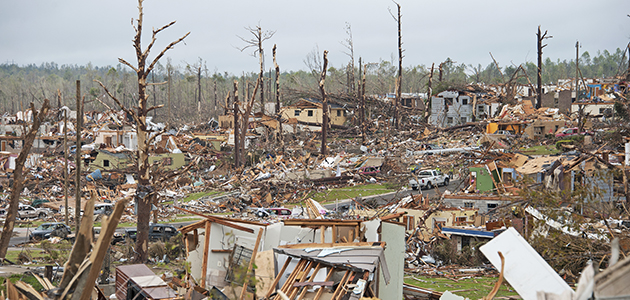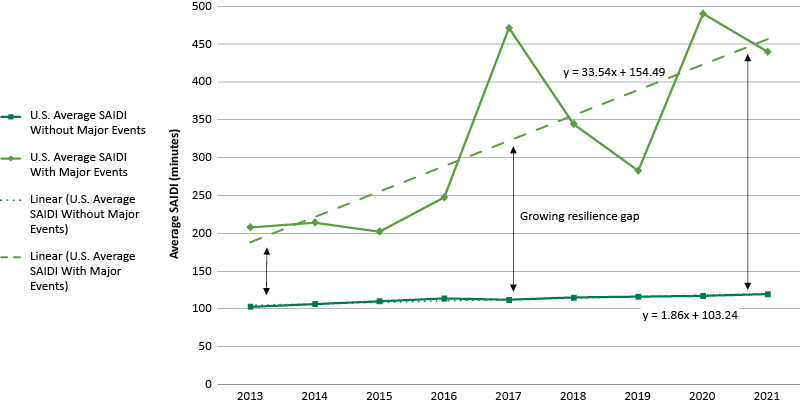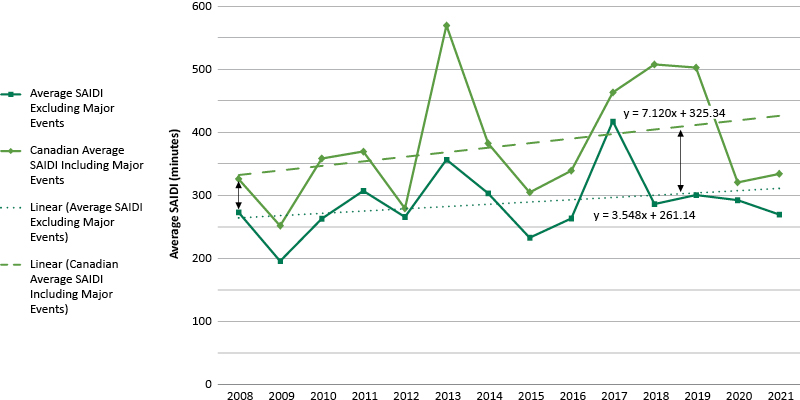Trends in Reliability and Resilience—the Growing Resilience Gap
Back to Top
Reliability and resilience are key aspects of utility performance. These measures matter to the utilities, their customers, and to regulators.
An updated report on Trends in Reliability and Resilience shows that, for the U.S. and Canada, the underlying System Average Interruption Frequency Index (SAIFI) and System Average Interruption Duration Index (SAIDI) metrics, when excluding major events, have been largely flat or increasing (worsening). This is in contrast with some other jurisdictions, such as the United Kingdom and Australia, where financial incentives have generally driven a pattern of improvement.
Even more significant is the growing “resilience gap” between the U.S. and Canadian reliability metrics, when including and excluding major events, that indicates a significantly growing resilience challenge. The linear trend line for SAIDI, when including major events, is growing at a rate of 34 minutes per year. In contrast, the linear trend line for SAIDI, when excluding major events, is growing at a rate of approximately 2 minutes per year. This represents a difference in growth of 32 minutes each year. See Figure 1.
Figure 1. U.S. SAIDI With and Without Major Event Days

Source: Annual Electricity Power Industry Report, EIA Form 861 detailed data workbooks.
The same pattern also is occurring in Canada, where a varying but generally growing gap exists in SAIDI when the inclusion and exclusion of major events is considered. Based on the linear trends, SAIDI, when including major events, is growing at a rate of 4 minutes more per year than when excluding major events. See Figure 2.
Figure 2. Canadian Average SAIDI Including and Exclusing Major Events

Source: CEA Annual Electricity Distribution Reliability Reports.
This ties to evidence of growing threats from severe weather events seen in broader climate and governmental data. However, this contrasts with a range of other countries where ongoing improvements in reliability have maintained or reduced the resilience gap, despite severe weather events becoming more common.
The importance of a reliable and resilient grid is continuing to grow as society decarbonizes and embraces the electrification of transport and heat and as societies are affected by more frequent severe weather events.
As such, it is important to consider the options available for improving reliability and resilience. These include more preventative actions to reduce the risk of faults occurring as well as steps to improve the response when faults occur. Options include grid segmentation, distribution automation, distribution infrastructure hardening, and undergrounding.
Investment must be undertaken to ensure the distribution grid is resilient not only for today’s weather conditions, but also for the climate in 2030, 2040, and 2050.